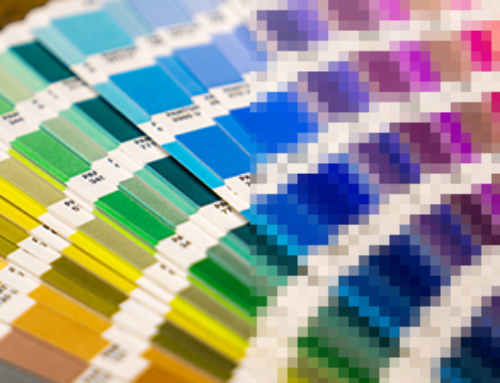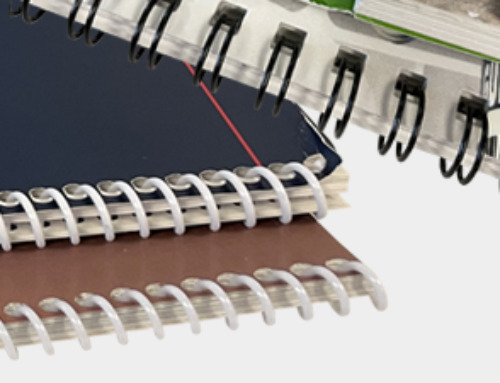 Ever feel overwhelmed by the ever growing need for eco-friendly printing? You’re not alone.
Ever feel overwhelmed by the ever growing need for eco-friendly printing? You’re not alone.
The push for sustainability grows every year. We each hold the responsibility to lessen our environmental impact and diminish our carbon footprint. The way we treat the environment has huge consequences for the future of our planet.
Moreover, we know that no one is perfect and it’s impossible for anyone to not do any damage. But if everyone made an effort to do something environmentally-conscious, we could all make a difference.
An easy way to do that is to start in the work place.
Did you know that the average office worker uses 10,000 pieces of paper each year? And as a printing company, we’re no stranger to that. We’re accustomed to going through tens of thousands of pounds of paper per month.
In order to combat the amount of paper we use, we make sure to follow a handful of guidelines per project.
1. Stock Recycled Content Sheets
Whenever possible, choose paper that maximizes recycled content and/or originates from responsibly-managed forests. Look for products that are certified by FSC (Forest Stewardship Council), an international non-profit organization committed to the promotion of worldwide responsible forest management.
They have three different ways of labeling their paper products:
- FSC 100%: paper made of 100% FSC-certified virgin fiber.
- FSC Mix: paper made from a combination of FSC-certified virgin fiber mixed with controlled virgin fiber and/or recycled fiber.
- FSC Recycled: paper made with 100% recycled fiber, of which at least 85% is post-consumer recycled.
Additionally, all of the paper comes from FSC-certified forests. Between the forest and the consumer, products undergo many stages of processing, manufacturing, and distribution.
Many printers will claim to have FSC-certified stock. However, you must have a certification from FSC to sell any of their product or use their label.

All in all, we’re proud to be certified by FSC at Graphic Image. We always make sure to have FSC-certified stock on hand for any project, and we’ll special order based on a client’s needs. On top of that, many of our house sheets offer recycled content.
2. Use Custom Sized Sheets
At every chance, we buy custom sizes of paper that fit the scopes of the project we’re working on.
As a result, we’re utilizing as much surface space as possible without having to trim off any excess paper. That inch of paper not getting cut-off really adds up with preserving trees, recycling, and manufacturing costs.
It’s good for the trees and for your wallet.
3. Utilize Chemistry-Free Processes
Printers have made great strides in recent years to limit toxic waste and carbon-emission. Traditionally, it was an industry that was accompanied by hazardous waste and extensive use of water and power.
Thankfully, there are many options now on the market to encourage eco-friendly printing.
Computer-to-plate (CTP) is an imaging technology used in modern printing processes. To start, a Desktop Publishing (DTP) application is used to create a digital image. It’s then output directly onto a printing plate. Prior to this, the plate would essentially go through darkroom processes resulting in chemical waste.
Nowadays, we have chemistry-free-plates. These plates don’t require developing like their predecessors. Instead, the image is lasered onto the plate and the negative areas are removed by applying a gumming solution. Once the gumming solution is stripped, that gets recirculated in the clean-out unit which further eliminates waste.
Here, we use a 100% process-free plate that eliminates the need to use a gumming solution. In turn, this helps the environment to an even greater extent due to us using less processes.
The less material and usage, the better.
4. Invest in Ink Optimization Software
Ink optimization software utilizes Gray Component Replacement (GCR) to change the separation of colors in an image. This will take the colors in the channel and increase the black channel. It essentially replaces colors where it helps you use less ink. Ultimately, the primary motivation for using this software is to cut down on ink usage.

There are other benefits besides ink saving. These include: saving on toner, shorter drying time, and the reduced likelihood of blocking/pooling.
This not only benefits the environment, but it benefits your wallet. We all know that ink and toner are expensive. Ink Optimization makes a huge difference in the workplace.
At Graphic Image, we make sure to use ink optimization on every 4-color job.
5. Printing with Soy-Based Inks
To make your printing even greener, consider using soy-based or vegetable-based inks. These inks are safer for the environment when you compare them to the standard petroleum-based inks.
Soy is a popular choice due to its properties that enhance its ability to carry solid pigments. The colors are brighter, more vibrant, and really pop versus their petroleum-counterpart. While vegetable-based inks are a great choice, the colors and vibrancy don’t match to that of soy-based.
Petroleum-based inks are environmentally-hazardous which is why so many printers have switched to soy-based. While effective, they contain a high amount of VOCs (volatile organic compounds). These compounds include toluene, benzene, and xylene which are all harmful for people, wildlife, and the environment.
Conclusion
Think, then print. Is it absolutely necessary to print out a document to write a few words on? Would a quick email accomplish the job versus having to print it on paper? You could also transition to paper-less notes and keep recycling bins handy.
All in all, there are tons of ways we can be eco-friendly and promote sustainable-living. Shifting practices in the workplace is one of the easiest ways, and it starts with printing.
Show your clients that you care by implementing some of the practices listed above. Once the implementation starts, it becomes second nature.
A little bit of effort goes a long way.
The planet will thank you, and so will your wallet.
—
Ready to start your eco-friendly print campaign? You can email us at info@graphicimage.net or contact us here.




